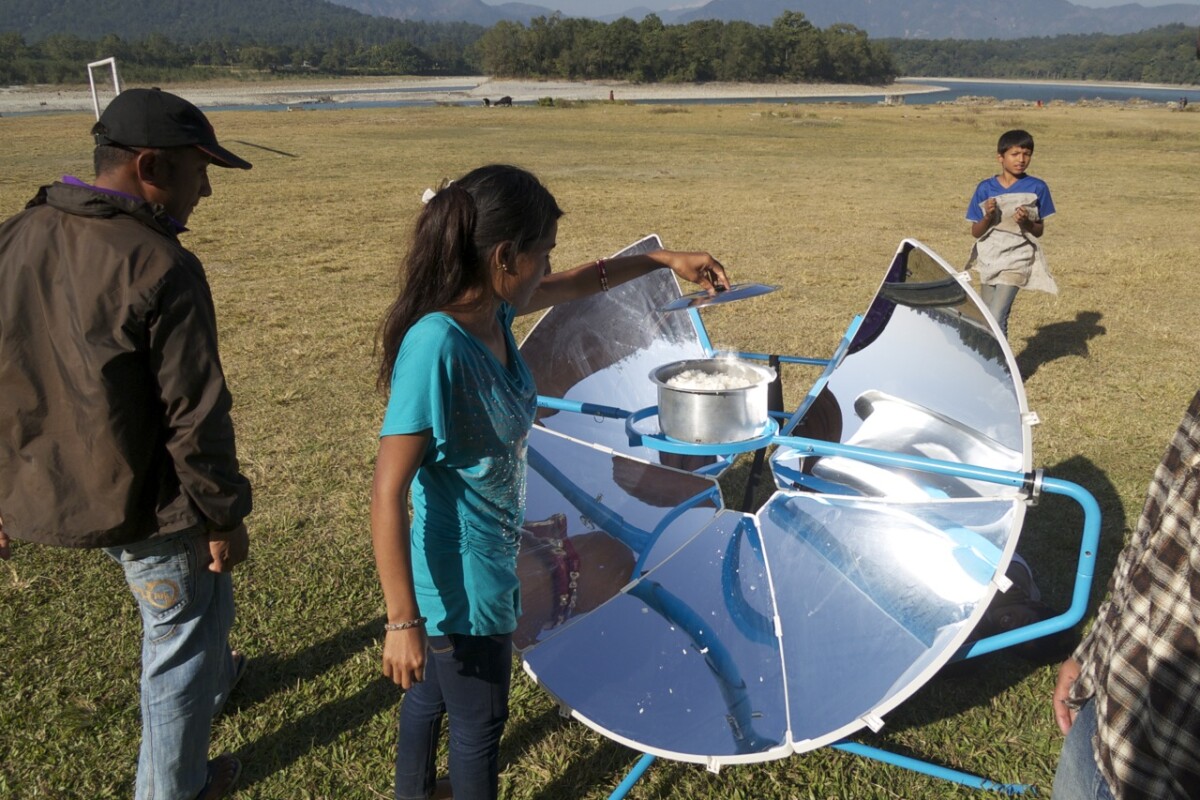We've already seen the Solar Kettle, which uses heat from the sun to boil water. Now we have a product called SolSource that also harnesses the sun's heat, but instead of boiling water, it can cook anything you would put on a regular grill.
The team at One Earth Designs began working on this product with a group of nomads in the Himalayas. It went through 13 prototypes before it ultimately arrived at its final design.
SolSource looks much like a satellite dish. The user points the metallic surface towards the sun, and it reflects the heat back to the cooking surface, thus making it hot enough for cooking. The team claims it is able to cook a burger in about six minutes, which is about the same amount of time it would take on a charcoal or propane grill.
In addition to grilling burgers and other standard grill food, SolSource can be used to bake, fry and boil, which means that in the right weather conditions, it can be the primary cooking device for a household. An additional key fact pointed out by the designers is that SolSource doesn't create any emissions.
One Earth Designs is seeking funding for its solar-powered grill on Kickstarter. Backers looking to receive their own SolSource are required to make a pledge of US$249. The team plans to sell the grill at retail for $399, so getting it through Kickstarter makes for a pretty good deal.
The Kickstarter pitch video below provides more information and shows the SolSource grill in use.
Sources: One Earth Designs, Kickstarter






